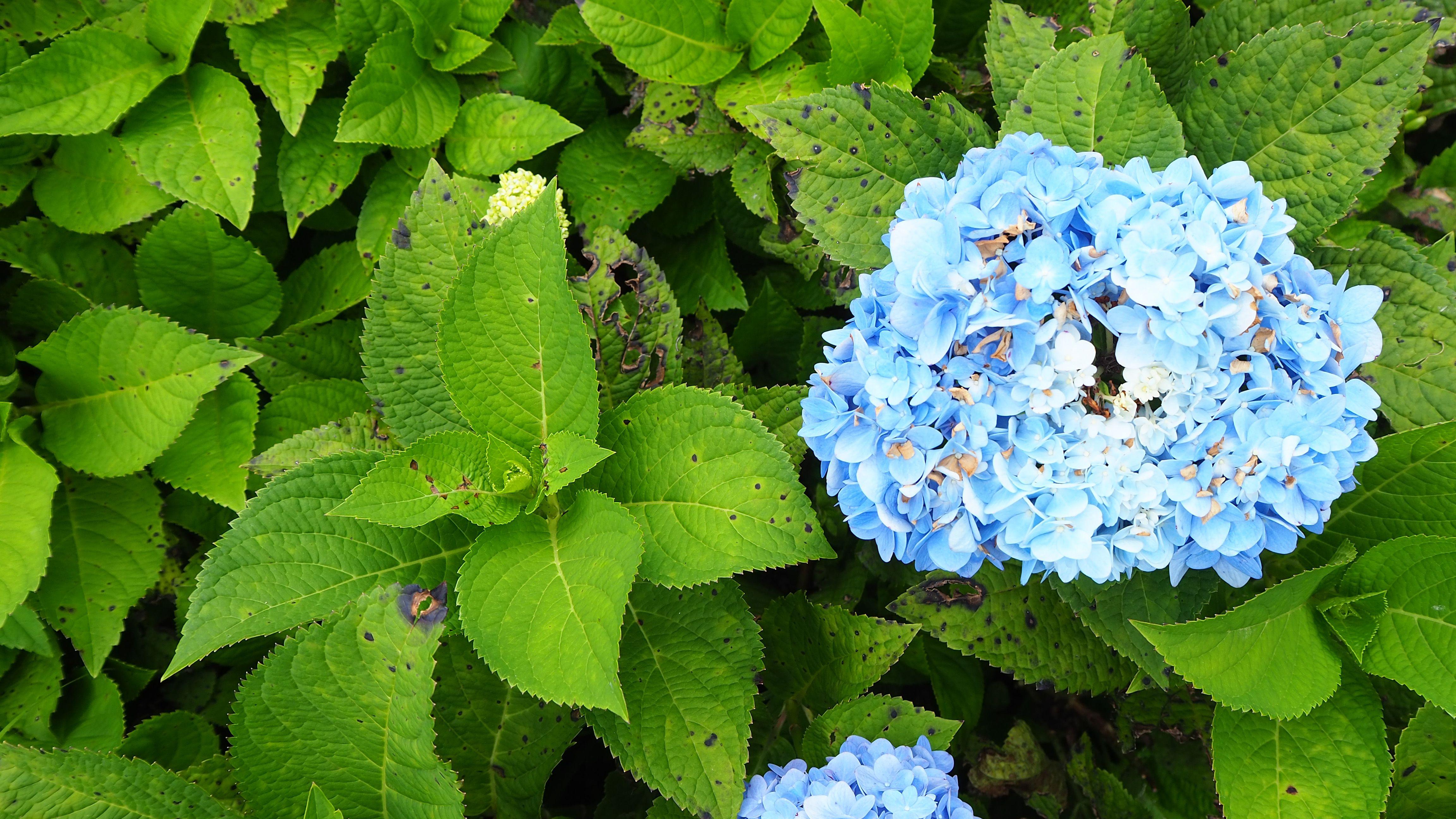Key Takeaways
- In late summer or fall, Cercospora fungus causes brown spots on hydrangea leaves.
- The plant looks unsightly but usually recovers from the disease.
- Drip irrigation, good air circulation, and removal of infected leaves prevent the spread.
If your once beautiful hydrangea is sporting speckled foliage, you’re not alone. A frustratingly common occurrence in late summer and fall, brown spots on hydrangea leaves usually indicate that the plant has a fungal infection. The good news is that the disease won’t kill your hydrangea. The bad news is that the shrub will likely look that way until it drops its leaves and goes dormant.
By following a few easy gardening practices and with a little luck, your hydrangea will have clean, green foliage again next year. Here’s what you need to know about the causes of brown spots on hydrangea foliage and how to prevent them.
What Causes Brown Spots in Hydrangeas
There are several diseases that cause leaf spots on hydrangeas. A fungus called Cercospora is the most prevalent foliage disease in late summer and early fall, whereas Anthracnose and Alternaria leaf spot are fungal diseases that appear in spring, summer, and anytime there are wet, warm conditions.
Symptoms of Cercospora are usually first noticed in August or September. Leaf spot fungus doesn’t discriminate between types of hydrangeas. It impacts bigleaf, panicle, oakleaf, and other hydrangeas with equal tenacity.
Disease Progression
Leaf spot symptoms usually appear on older leaves near ground level first. The first spots are tiny, purple, and circular. As the spots enlarge, their shape becomes irregular, and they might develop a tan or gray center. An intense infection can cause spotted leaves to turn yellow-green and eventually drop off the plant.
Related
When to Take Action
More unsightly than it is damaging, the fungus rarely kills a hydrangea. A severe infection can cause a plant to drop its leaves, but it will almost always send out new foliage the next growing season. However, hydrangeas that get Cercospora year after year will eventually succumb to the disease as their energy storage is depleted by the annual early leaf drop. If you notice slow growth and limited flowering in a repeatedly infected plant, take steps to control the fungus.
How to Manage Leaf Spot Disease
The fungus that causes late-season leaf spots on hydrangeas is prevalent in the environment and virtually impossible to eradicate, but there is much you can do to limit its effect on your hydrangeas. Don’t let a minor fungal disease stop you from growing these stellar shrubs.
The first line of defense is a healthy hydrangea. When their needs are met, hydrangeas are some of the easiest flowering shrubs to grow. All hydrangeas need well-drained soil and regular moisture, while the right amount of light depends on the type. Oakleaf hydrangeas thrive in shade, while panicle hydrangeas demand ample sunlight. Get to know your hydrangea and pair it with the optimal growing conditions for its type. A healthy hydrangea is much more resilient against leaf spot than a stressed hydrangea.
Prevent Spores from Spreading
Leaf spot fungus is commonly spread by water droplets and wind. A drip hose is ideal for watering as it prevents water from splashing on the foliage. If you are only targeting the base, a watering wand is also a good option to water your hydrangea. A 2-inch layer of mulch around the base of the plant also prevents fungal spores from splashing onto the plant’s leaves.
Ensure Good Air Circulation
Create conditions for good air circulation around your plant so wet or dewy foliage dries as quickly as possible. Prune nearby plants that are blocking air flow. If the hydrangea is particularly dense, consider removing a few central stems at ground level to encourage air flow through the plant.
Remove Infected Leaves
As soon as brown leaf spots appear, pluck off and discard these infected leaves. When left on the plant, the spotted leaves become a launch point for the disease to spread. Rake up and discard fallen leaves from the base of the plant. At the end of the growing season, as part of your fall cleanup, rake and discard all leaves below infected plants to reduce the chance of brown leaf spot reappearing the following year.
There are several fungicides available for brown leaf spot prevention, but they must be applied intensively and they are rarely worth the effort. Fungicides labeled for brown leaf spot control must be applied beginning in May or June, before symptoms appear, and then reapplied every 10 to 14 days through the growing season.
Select Resistant Hydrangeas
Hydrangeas with thick, glossy leaves generally have better resistance to leaf spots and other foliage diseases than hydrangeas with more delicate foliage. If you are planting a new hydrangea and leaf spot is troublesome in your area, consider planting ‘Let’s Dance Sky View’ and Let’s Dance Big Band’, two bigleaf hydrangeas with thick, glossy foliage; ‘Quick Fire Fab’, a panicle hydrangea with substantial leaves; or ‘Invincibelle Mini Mauvette’, a smooth hydrangea with thick foliage.
If leaf spot disease is present, it will still impact even these plants in warm, humid conditions, though the infection will likely be minimal.



